Hydrangea vanilla fries - a delicate flower
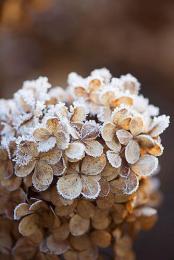
Hydrangea paniculata Vanilla Fraise has a distinctive feature - the plant is resistant to cold. Withstands low temperatures down to -40 degrees. When preparing mature plantings for winter, you don’t have to worry about covering the hydrangea. And even if some bushes are frozen, it’s not scary, hydrangea is able to recover very quickly and well.
Content:
Features of the variety
If you decide to plant Vanilla Fries hydrangea, consider its size - the shrub can grow up to two meters in height in a fairly short time.
Hydrangea Vanilla Fries begins to bloom in July. With its large inflorescences up to 30 cm in diameter, it will delight all summer and the first half of autumn. The inflorescences are pyramidal, sterile, like many hydrangeas.
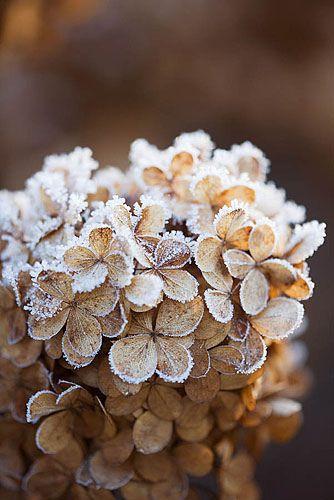
This variety is characterized by a unique, unusual color of flowers, which can be both white and bright red on one bush at the same time. It is noteworthy that at the beginning of flowering, hydrangea is strewn with white flowers. A little later, a pink border can be seen along the edge of the petals.
Gradually, the entire inflorescence acquires a soft pink hue, which by autumn turns into a rich crimson. Thus, due to long flowering, on one bush you can see all the colors of hydrangea at the same time.
Hydrangea: planting and care
In order for hydrangea to be characterized by vigorous growth and lush flowering, seedlings should be grown in moist and rich soils. The best combination would be leaf soil, humus, sand and peat. If lime is present in the soil, the plant will not be able to grow.
Fertilize hydrangea well with slurry, ammonium nitrate, potassium nitrate, and superphosphate. Feeding is important not only for flowering this year, but also for the formation of flower buds in the next year. Nitrogen fertilizers can only be applied in the spring, otherwise the hydrangeas will not be able to prepare for winter and will become severely frozen. Ash should not be added at all, as it can deoxidize the soil, and the alkaline reaction is harmful to hydrangeas.
Partial shade is desirable for planting. Sunny areas are less suitable, but you can risk planting if you provide water to your pet, that is, maintain soil moisture. In the sun, the size of the flower stalks becomes smaller.
In winter, bushes must be protected from snow falling from the roof of the house. The shoots of the plant are quite fragile and can be seriously damaged.
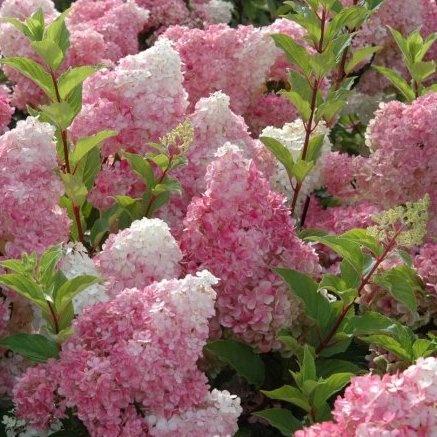
There are no special pruning requirements. As they fade, in the fall, cut off the inflorescences. In the spring, when the growth buds have swelled, frozen, dry, weak and old shoots are cut out. In autumn, one-year-old shoots are shortened by 3-4 knots. This prevents frostbite of immature shoots and stimulates their development.
To preserve moisture in our climate, it is useful to mulch the root zone of hydrangeas. After the soil warms up in the spring, add a layer of mature compost or peat about 8 cm.
Hydrangea: propagation
Propagated by layering, dividing bushes, cuttings, and less often by seeds. You can familiarize yourself with the features of hydrangea cuttings Here.
Landscape design
This variety, one might say, has become a cult favorite among landscapers in recent years. Hydrangea Vanilla Fries looks good in mixed plantings and mixborders. Its crowning place in the group is in the middle and background, since not everyone likes the flowers that begin to color for a short time in a close perspective.
In mixborders it is combined with phlox, sedum, knotweed, and cuff. You can create an impressive composition if you line the hydrangea bush with hostas of large, even better, giant varieties. The standard form will allow you to save space under the plant for arranging the lower tier with other flowers. This is especially true for small gardens. And maintaining the bushy form will provide an impressive accent in any part of the garden - in the recreation area, in the ground floor, near the veranda.
In magazines and brochures on landscape design there are photographs where hydrangeas are planted along an alley of birch trees. But both crops have shallow root systems and will actively compete for water. Such a combination is possible only for coastal zones, for humid climates. Either it is necessary to carry out special drip irrigation with built-in soil moisture sensors.
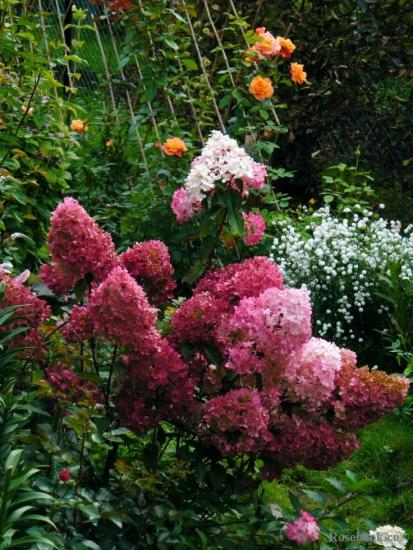
You should be careful when combining hydrangea with spruce trees, although such compositions look quite good. The hydrangea variety is resistant to gas pollution and smoke and can be used in urban environments.
By purchasing and planting Vanille Fraise hydrangea, you are providing yourself with a loyal companion for many years to come. In paniculate hydrangea, the main trunk can live and develop for up to 40 years.
Try to build a stable support, provide protection from snow falling off the roof, and you will get a unique, abundantly flowering tree on a trunk.Or leave it a bushy form to decorate a corner in a landscape style.

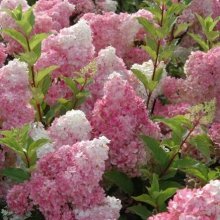
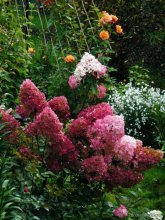
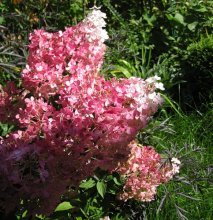
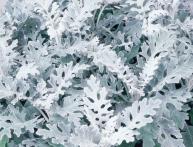
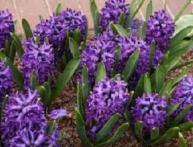
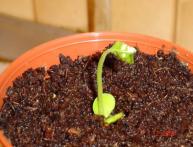
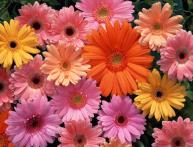

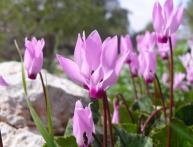
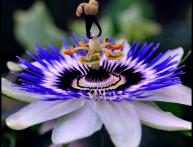
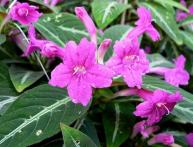
Comments
Yes, hydrangeas are amazing plants, very beautiful, very decorative. One of my friends prefers these charming and unpretentious flowers. They grow all over her front garden and at home, on the windowsills.
I planted a young bush in the spring, I didn’t even expect it to bloom, although it’s still white.